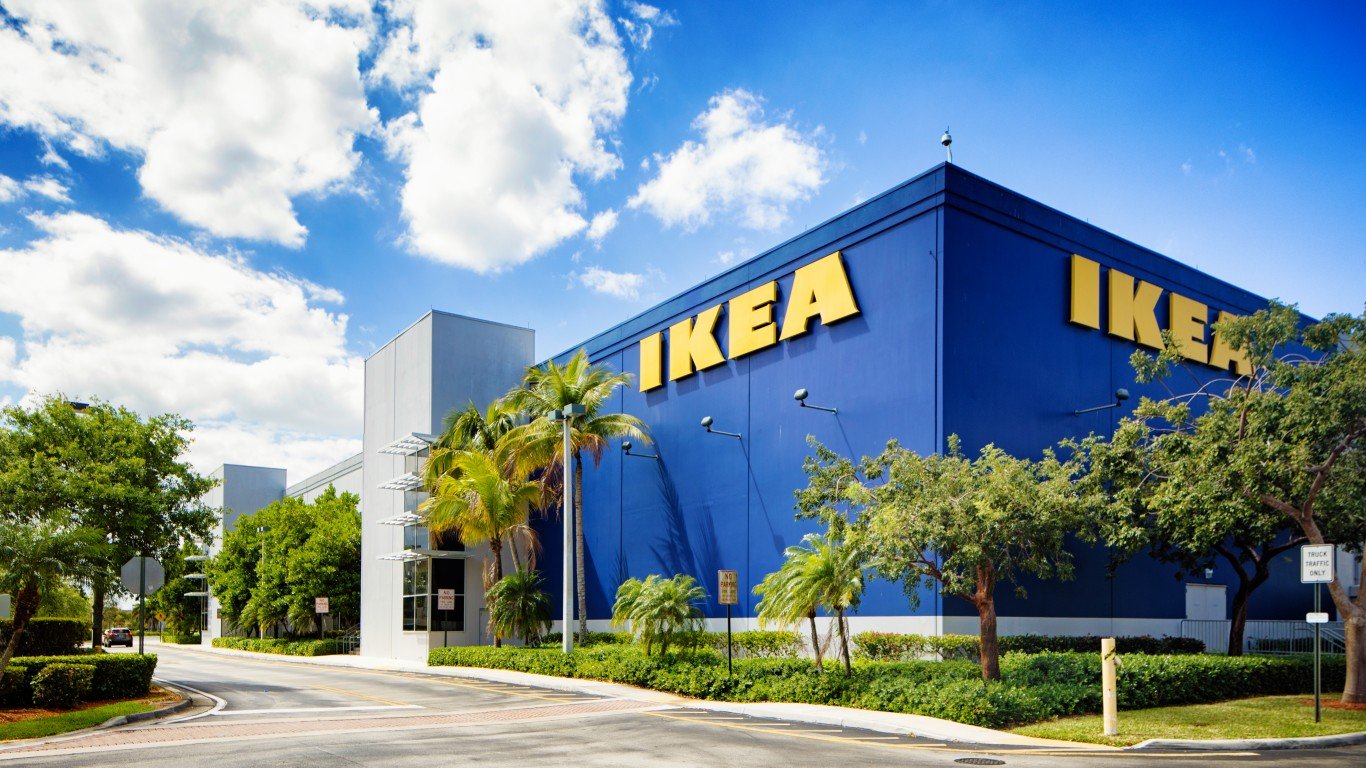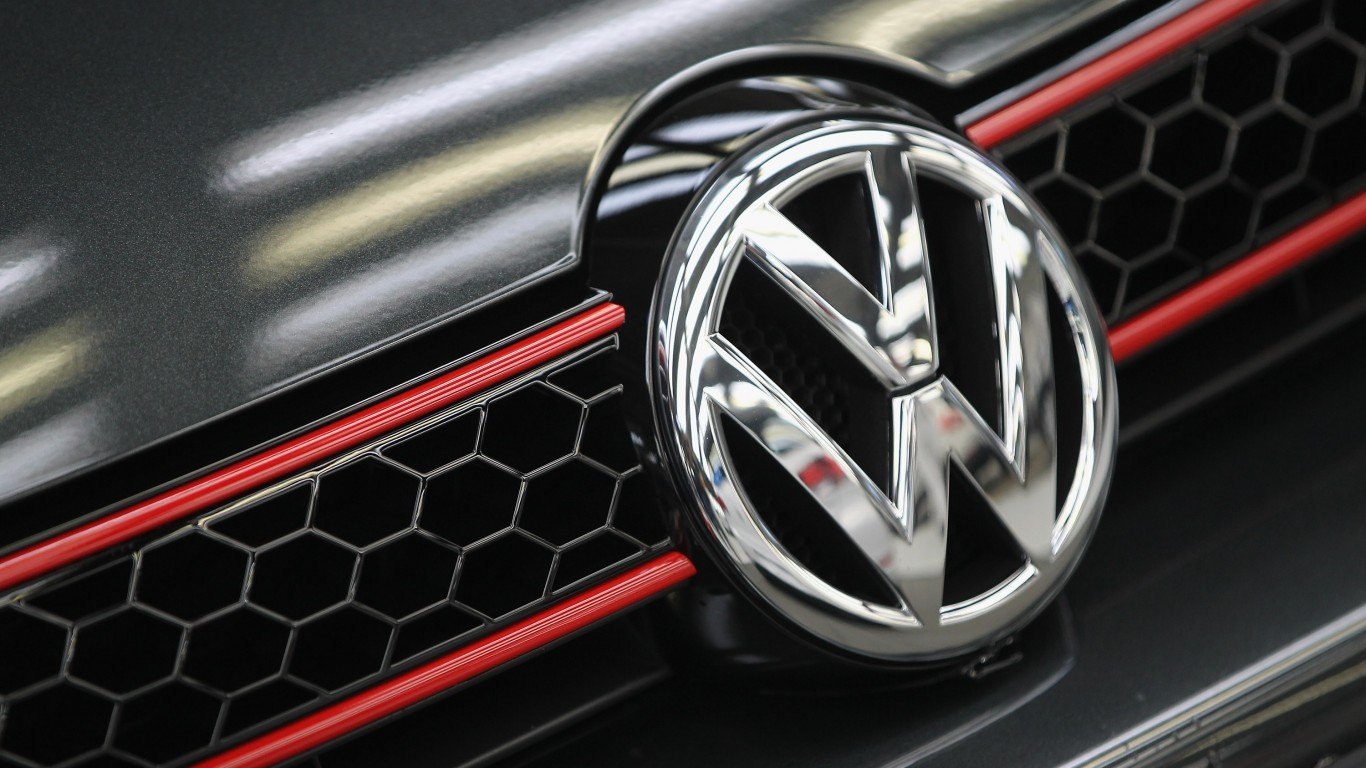
Ikea
> Pledge: Climate positive by 2030
> Quality and credibility of climate planning: Low
> Revenue, 2021: $47.0 billion
> Emissions, 2021: 26.8 million metric tons of CO2 equivalent
> Major source of emissions: Raw material extraction and processing (52%); product use (17%).
Earning a “reasonable” score for transparency and “low” for integrity, Ikea gets positive comments for the credibility of its 2050 net-zero goal and its support for suppliers in obtaining high-quality alternative energy. Its overall low score is mainly attributable to the company’s “climate positive by 2030” headline pledge, which CCRM cites as misleading.
In essence, the assertion that the company will be carbon positive – meaning that it will be removing more carbon from the atmosphere than it emits – is based on the idea that some parts of its value chain will offset the emissions of other parts. Wood products, it is argued, will capture carbon, making up for equivalent carbon emissions. The flaw in the equation is that Ikea is not able to show that the capture of carbon is permanent or how it will be verified. Similarly, photovoltaics sold by Ikea should not be used to neutralize its emissions because it is the ultimate user who gets credit for the clean energy produced.

Volkswagen
> Pledge: CO2 neutral by 2050
> Quality and credibility of climate planning: Low
> Revenue, 2020: $252.0 billion
> Emissions, 2020: 376.1 million metric tons of CO2 equivalent
> Major source of emissions: Use-phase of vehicles sold (76%); purchased goods and services (17%)
Volkswagen is heavily invested in developing several models of electric vehicles and is supporting EV charging infrastructure and battery technology. On the other hand, it is not planning on phasing out vehicles with internal combustion engines on a schedule that is compatible with the Paris Agreement goal of limiting temperature rise to 1.5 degrees Celsius. Its own pledge is to actions compatible with a 2 degree increase. Volkswagen is also investing in nature-based offsets and is not providing details on its alternative energy commitment.

Walmart
> Pledge: Zero operational emissions by 2040
> Quality and credibility of climate planning: Low
> Revenue, 2020: $559.2 billion
> Emissions, 2019: 203.1 million metric tons of CO2 equivalent
> Major source of emissions: Procurement of goods(71%)
According to CCRM, Walmart has done a good job at showing how it will achieve its 2040 zero emission goal for its own operations and energy use, employing interim goals to mark progress. But this target does not include scope 3 emissions – those from the upstream and downstream ends of its value chain. In fact, the 2040 goal only accounts for 9% of its emissions, with 75% attributable to its upstream suppliers.
Walmart’s plan for addressing upstream emissions is currently centered around a program it calls Project Gigaton, which encourages and supports suppliers’ emission reduction efforts. Because the program is voluntary, less than a quarter of Walmart’s 10,000 suppliers have enrolled.

Vale
> Pledge: Carbon neutral by 2050 (scope 1 & 2)
> Quality and credibility of climate planning: Low
> Revenue, 2020: $40.0 billion
> Emissions, 2020: 490.8 million metric tons of CO2 equivalent
> Major source of emissions: processing, transport and use of sold products (95%).
Based in Brazil, Vale is one of the world’s largest mining companies. As such, carbon emissions reduction is an immense problem, with 98% of its value chain emissions attributable to the actions of upstream and downstream entities. Its 2050 pledge applies only to its own operations and energy use. For these, it is doing a fair job by, among other things, focusing on quality alternative energy sources. As for its scope 3 emissions, it has set an interim reduction target of 15% by 2035, with no plan for carbon neutrality. Still, Vale is credited for working on customer engagement and innovative approaches that hold potential for significant results.
Accenture
> Pledge: Net-zero emissions by 2025
> Quality and credibility of climate planning: Very low
> Revenue, 2021: $50.5 billion
> Emissions, 2020: 0.9 million metric tons of CO2 equivalent
> Major source of emissions: Purchased goods and services (48%), Business travel (31%)
Irish consulting company Accenture specializes in IT solutions. CCRM gives the company its highest rating – reasonable – for its transparency in that it gives a detailed accounting of its carbon profile, including its energy use and emission sources for its entire value chain. Accenture has also made a bold pledge to get to net zero by 2025, positioning itself as a climate leader.
Overall, however, CCRM is not impressed. There is little in the way of actual reductions in emissions in the company’s plan, even though the company’s emissions are not daunting to begin with, being a service organization. It appears that Accenture is going to rely on nature-based offsets, which cannot be guaranteed as permanent and may be subject to double counting.







